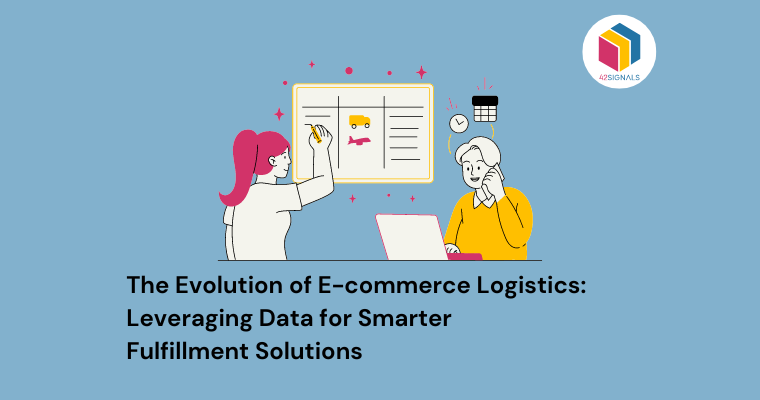Competitive Benchmarking
Competitive benchmarking is like a way for companies to learn from their competitors. They look at what other companies are doing, like how they make products, how they sell them, and how they make customers happy. By comparing themselves to their competitors, companies can find ways to improve what they do and be better at what they offer. It’s like trying to be as good as or even better than the other companies in their industry.
Let’s consider an example of competitive benchmarking for an organic skincare company that plans to launch a new line of face creams. In order to ensure their competitiveness, the company engages in competitive benchmarking by examining and analyzing three primary competitors in the industry: Company A, Company B, and Company C. The analysis focuses on various aspects of their websites, including product pages, pricing, customer reviews, and marketing efforts. Noteworthy practices are identified, such as Company A’s comprehensive ingredient descriptions and Company B’s testimonials. Price comparisons are made, with the consideration of adjusting their own prices if necessary. By scrutinizing customer reviews, areas for product enhancement are identified. Finally, the company pays attention to marketing strategies, such as influencer partnerships utilized by Company C, and contemplates adopting similar approaches. This benchmarking process aids the company in refining their offerings and successfully launching competitive facial creams in the organic skincare market.
Why is competitive benchmarking important
Competitive benchmarking provides valuable insights and strategic advantages to organizations. By comparing their performance against competitors, companies can identify their strengths and weaknesses, uncover best practices, and discover opportunities for improvement. This process helps companies understand their market position, customer preferences, and industry trends.
Competitive benchmarking enables organizations to set realistic goals, refine their strategies, and make informed decisions to enhance their competitive advantage. It fosters innovation, encourages continuous improvement, and helps companies stay ahead in a dynamic business environment. Ultimately, competitive benchmarking allows organizations to optimize their operations, deliver better products or services, and achieve sustainable growth and success.
Setting Objectives and Scope
Defining your benchmarking objectives
Defining benchmarking objectives is crucial as it guides the analysis, ensuring relevant insights. Objectives should align with goals and priorities, such as improving efficiency, product quality, reducing costs, or entering new markets. SMART objectives (specific, measurable, achievable, relevant, time-bound) help focus efforts and select benchmarking partners. They establish KPIs, scope, and provide a framework for meaningful improvements. Ultimately, defining objectives sets a solid foundation for successful benchmarking, driving organizational growth.
Identifying the scope of benchmarking
Identifying the benchmarking scope sets the boundaries and parameters of the analysis. It determines which areas or processes will be compared with benchmarking partners, whether broad or narrow. Defining the scope keeps the study focused and manageable. It helps identify relevant partners and select suitable data and metrics for comparison. The scope can also consider the timeframe, past, current, or future performance. In summary, defining the scope streamlines the comparison process, clarifies boundaries, and enables meaningful insights for improvement.
Selecting competitors for benchmarking
Selecting competitors for benchmarking helps determine reference points for comparison. Factors to consider include industry relevance, market share, target audience, and comparable offerings. Focus on competitors excelling in desired areas and those known for innovation or customer satisfaction. Utilize industry reports, research, and feedback to identify leading competitors. Prioritize a manageable number to benchmark, striking a balance between comprehensiveness and overwhelming analysis. Ultimately, selecting competitors that provide relevant insights drives improvement and competitive advantage.
Gathering and Analyzing Data for Competitive Benchmarking
Identifying relevant data points
Identifying relevant data points for competitive benchmarking is essential to ensure a meaningful and insightful analysis. Organizations should consider key areas and metrics that align with their benchmarking objectives. This could include financial indicators such as revenue, profitability, and cost structure, as well as operational metrics like production efficiency and inventory turnover. Customer-related data points such as market share, customer satisfaction ratings, and retention rates are also crucial. Additionally, organizations may want to gather data on innovation, marketing strategies, and employee productivity. The selection of data points should be based on their relevance to the organization’s goals, industry standards, and availability of reliable and comparable data. By identifying and collecting the right data points, organizations can gain valuable insights and make informed decisions to improve their performance and competitive position.
Collecting data from various sources
Collecting data from various sources is a vital aspect of competitive benchmarking, and one effective method is through web scraping. Through web scraping, organizations can obtain relevant data from competitor websites, including product details, pricing, customer reviews, and ratings. This information offers insights into competitors’ offerings, market position, and customer perception. Web scraping can also capture data on advertising campaigns, social media engagement, and promotional activities, shedding light on competitors’ marketing strategies. Custom-built scripts or specialized software tools can be used for web scraping, extracting desired data elements and storing them for analysis. Ethical practices, legal compliance, and respectful handling of websites are important considerations. By leveraging web scraping, organizations gain comprehensive and timely information, empowering them to make informed decisions, identify improvement opportunities, and gain a competitive edge in their industry.
Analyzing and interpreting benchmarking data
Analyzing benchmarking data is essential for deriving actionable insights in ecommerce. ecommerce analytics tools evaluate performance metrics, customer behavior, and market trends. With ecommerce analytics tools, organizations can assess KPIs like website traffic, conversion rates, average order value, and customer acquisition costs, comparing them to industry benchmarks and competitors. The data also enables analysis of customer segmentation, browsing patterns, cart abandonment rates, and purchase history. This aids in tailoring marketing strategies, improving customer experience, and optimizing conversion rates. Tracking and evaluating marketing campaign effectiveness is also possible with these tools, measuring performance and identifying areas for improvement. Data visualization techniques like charts and graphs assist in identifying trends and patterns. In-depth analysis uncovers correlations and causal relationships, leading to actionable strategies.
Tools and Techniques for Competitive Benchmarking
Manual data collection and analysis
One of the traditional competitive benchmarking tools is manual data collection and analysis. This involves gathering information through primary research, such as visiting competitor websites, attending industry events, or conducting interviews. Manual analysis requires a systematic approach to organize and analyze the collected data, allowing organizations to compare their performance against competitors.
Online research and industry reports
Online research is an efficient competitive benchmarking tool. Organizations can explore competitor websites, industry publications, and relevant online resources to gather data on market trends, product offerings, pricing, and customer reviews. Additionally, industry reports provide valuable insights into industry benchmarks, market share, and emerging trends, helping organizations contextualize their performance.
Competitive intelligence software
Competitive intelligence software, including ecommerce analytics tools, is a powerful resource for competitive benchmarking. Competitive benchmarking tools provide comprehensive data analytics capabilities, allowing organizations to assess performance metrics, customer behavior, and market trends. Ecommerce analytics tools can track website traffic, conversion rates, customer segmentation, and marketing campaign effectiveness. Leveraging such tools enables organizations to gain deeper insights and make data-driven decisions.
Surveys and customer feedback
Surveys and customer feedback are valuable sources of information for competitive benchmarking. Organizations can conduct surveys to gather insights on customer satisfaction, preferences, and perceptions of competitors’ offerings. Customer feedback channels, such as reviews and social media interactions, can also provide valuable information about competitors’ strengths and weaknesses. Analyzing survey data and customer feedback allows organizations to gain a deeper understanding of customer needs and expectations in comparison to their competitors.
Best Practices for Effective Competitive Benchmarking
Clearly defining key performance indicators (KPIs)
Before conducting competitive benchmarking, it is crucial to clearly define the KPIs that will be used to measure performance and compare against competitors. These KPIs should align with the organization’s goals and strategic priorities. Clear definitions ensure consistent measurement and enable meaningful comparisons.
Establishing a benchmarking process and timeline
Developing a well-defined benchmarking process is essential for effective and efficient analysis. This includes outlining the steps involved, establishing data collection methods, and defining roles and responsibilities. Additionally, setting a timeline ensures that benchmarking activities are conducted within a specific timeframe, providing structure and focus to the process.
Ensuring data accuracy and reliability
The accuracy and reliability of benchmarking data are paramount to obtain meaningful insights. Organizations should ensure that data collection methods are rigorous, utilizing reliable sources and validated data. Implementing data validation processes, such as cross-checking data from multiple sources, helps ensure accuracy and enhances the reliability of the benchmarking analysis.
Maintaining confidentiality and ethical considerations
When conducting competitive benchmarking, it is essential to maintain confidentiality and uphold ethical considerations. Organizations should respect the confidentiality of the benchmarking partners and handle data in a secure and responsible manner. Adhering to legal and ethical guidelines ensures fair and respectful practices, building trust and fostering positive relationships within the industry.
Conclusion
Ongoing competitive benchmarking holds significant importance for organizations in today’s dynamic business environment. It enables companies to stay well-informed about their competitors’ strategies, performance, and market position. Through continuous monitoring of the competitive landscape, organizations can identify emerging trends, industry best practices, and areas for improvement. Competitive benchmarking tools enable businesses to stay ahead of the market.
This ongoing process allows businesses to proactively adapt and adjust their strategies to maintain a competitive edge. It helps in identifying new opportunities, anticipating market shifts, and avoiding potential pitfalls. Additionally, ongoing competitive benchmarking fosters a culture of continuous improvement within the organization, driving innovation and growth. Organizations can secure long-term success in their respective markets by staying abreast of industry developments and drawing insights from competitors.





